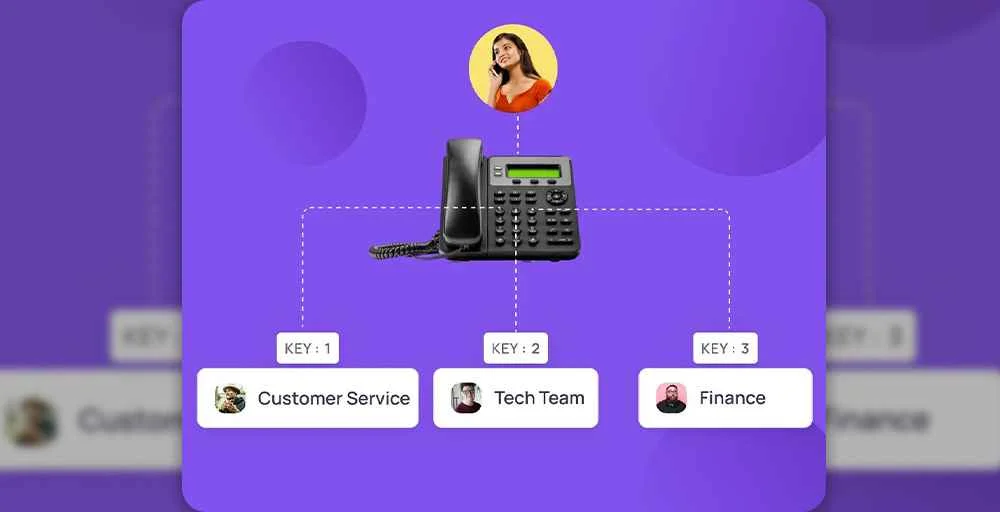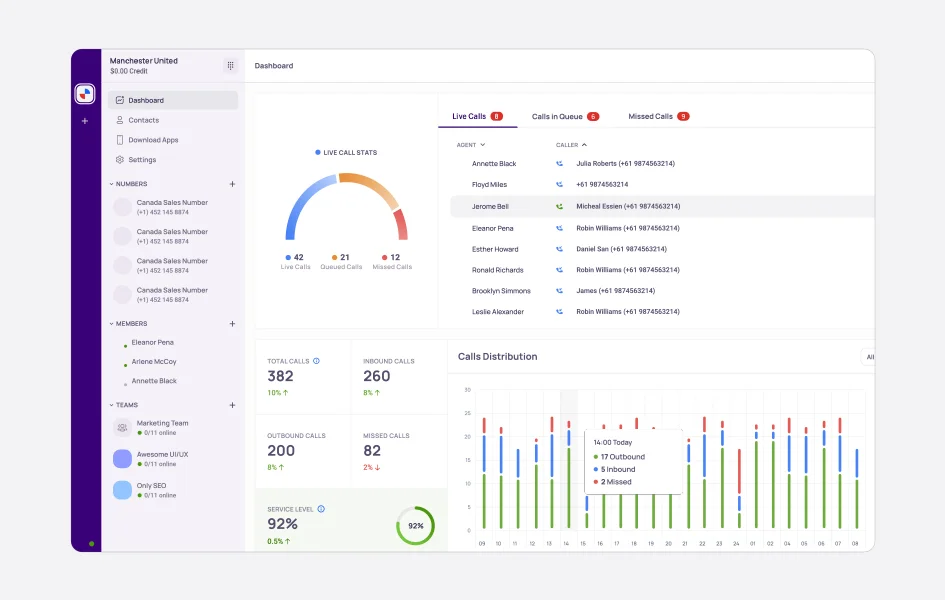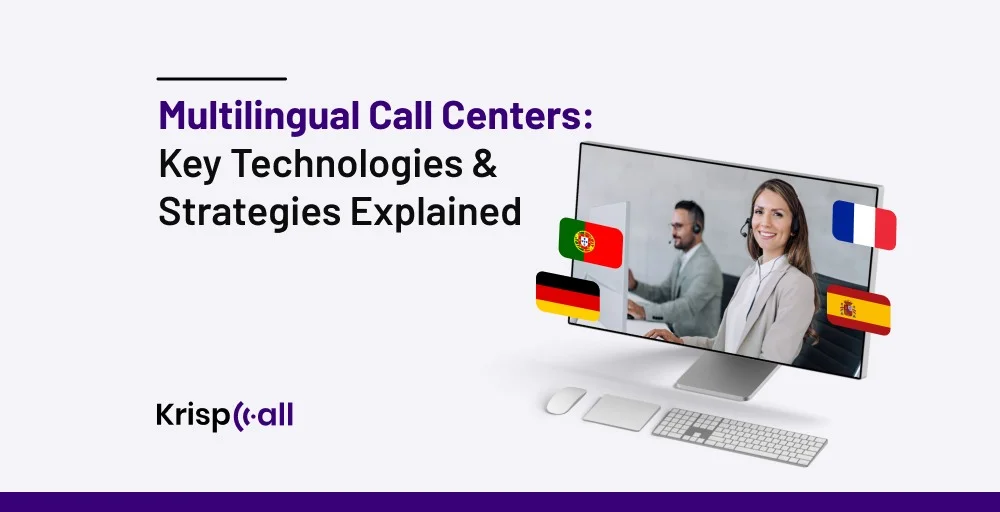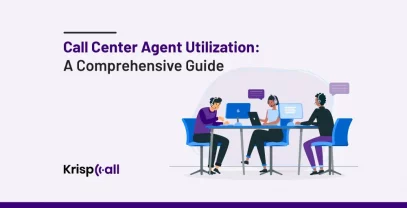Most businesses, whether small or large, operate in multiple countries to reach a wider audience. Even though technology has advanced to the point that businesses can operate their services internationally, language barriers persist and continue to hinder 😞 effective customer communication. This is where multilingual call centers come in 🦸.
These call centers aim to provide exceptional customer service across diverse markets, utilizing advanced technologies and strategic approaches to overcome diverse market language preferences. This ensures clear communication and improved customer satisfaction😉.
This blog explores the key technologies and strategies necessary for effective multilingual call center operations, highlighting the benefits and importance of these centers in today’s business landscape.
🔑KEY HIGHLIGHTS
- Multilingual Call Centers are designed to communicate with customers or prospects in various languages.
- These call centers offer numerous benefits, such as enhanced customer satisfaction, increased market reach, competitive advantage, and cost-effective operation.
- For effective multilingual call centers, invest in AI speech analytics, real-time speech translation, local caller ID, and AI chatbots with multilingual capabilities.
- The key strategies for implementing multilingual call center operations are to start with proper onboarding, provide ongoing training and coaching, prevent agent burnout with flexible scheduling, set goals, and more.
What are Multilingual Call Centers?
Multilingual call centers are specialized call centers that handle communication with customers or prospects in multiple languages. It allows businesses to reach out to diverse customer bases, ensuring that language barriers do not hinder effective communication.

These call centers either employ agents fluent in multiple languages or entirely outsource their call center operations to BPO (Business process outsourcing) call centers that offer multilingual contact center services. They may also invest in advanced call center technology, such as call center software with multilingual functionality and advanced features.
Various industries, such as telecommunication, travel, hospitality, and e-commerce, use multilingual call centers in global business.
For Example, a Global E-commerce Company with customers in different countries uses a multilingual call center to handle inquiries in multiple languages, ensuring that all customers receive support in their preferred language.
What are the Benefits of Multilingual Call Centers?
Using multilingual call centers is essential for business as it helps to significantly improve first-call resolution rate (FCR) and customer satisfaction scores (CSAT). These call center services overcome language barriers, enhancing customer loyalty.
These are the key benefits of multilingual call centers ⬇️:
- Enhanced Customer Satisfaction: Providing customer support in multiple languages ensures that each customer receives support in their preferred language. This leads to better understanding and satisfaction, making customers or prospects feel valued and understood and strengthening their loyalty to the brand.
- Increased Market Reach: Multilingual support allows businesses to offer customer service to a wider audience, allowing them to expand their services to new regions and demographics, increasing revenue and market presence.
- Competitive Advantage: Providing multilingual support sets a business apart from competitors. It demonstrates a commitment to customer service and inclusivity, attracting a diverse customer base.
- Improved Brand Image and Reputation: Providing multilingual customer service meets the needs of customers who speak different languages. This makes your business more accessible and fosters a positive brand perception. When customers can express their concerns in their own language, it shows your company’s commitment to diversity and customer-centricity.
- Cost-effective Operations: Multilingual call centers leverage technology for translation and interpretation, reducing the need for extensive multilingual staffing. This efficiency can lead to cost savings and more streamlined operations.
What are the Key Technologies for An Effective Multilingual Call Center Operation?
If you are willing to build an effective multilingual call center, you need to invest in some key call center technologies. Combining advanced technologies and call center management facilitates smooth communication and efficient operations. These ensure that language barriers are minimized and customer interactions are seamless.
These are the key technologies that you need to invest for an effective multilingual call center ⬇️:
1. Multilingual IVR and Call Routing
Interactive Voice Response (IVR) and call routing are essential technologies for multilingual call centers. You can direct incoming callers to the appropriate departments and agents based on their language preferences by configuring IVR menus and call routing rules. This technology enhances the customer experience by providing quick and relevant assistance.

Note: Incorporating AI and NLP (Natural Language Processing) technologies into IVR systems enables more efficient caller routing, improving CSAT scores, reducing handle times, and increasing FCR rates.
2. AI Chatbots with Multilingual Capabilities
One of the main technologies for an effective multi-language call center operation is AI chatbots with multilingual capabilities. Using AI chatbots, you can extend support options beyond voice, offering 24/7 self-service without the need for a live call center agent.
Utilizing technologies such as artificial intelligence and natural language processing, AI chatbots understand customer queries and respond effectively, regardless of the language used.
For instance, a customer with a billing inquiry in Spanish can interact with a Spanish-speaking chatbot, receive clear answers, and potentially resolve the issue without waiting for a live agent. This not only improves customer satisfaction but also frees up human agents to handle more complex inquiries.
3. AI Speech Analytics
No matter in which language the customer is explaining their concern, AI speech analytics can easily transcribe calls in real-time and translate them to multiple languages. It also has the capability to analyze the sentiment, keywords, and overall tone of conversations.
For example, a disgruntled Spanish-speaking customer may express frustration during a call. Here, AI speech analytics can identify negative sentiments and trigger real-time alerts. This allows supervisors to intervene and address the issue before escalation.
AI speech analytics can also generate detailed call summaries of every interaction based on your specific requirements.
4. Real-time Speech Translation
Real-time speech translation converts spoken words from one language to another in real-time. It utilizes Automatic Speech Recognition technology to detect the language spoken by the callers.
First, it processes the audio input, identifies the spoken language, converts speech to text, translates it to the required language, and generates a text-to-speech output.
This process repeats whenever you receive a call. That enables call center agents to communicate with customers in their native tongue, fostering a more comfortable and productive interaction. Businesses can also purchase language translation services from providers.
5. Multilingual CRM Systems
Multilingual CRM systems are specifically designed to support multiple languages. This makes them ideal for businesses operating in multiple regions with diverse linguistic needs. They enable agents to view customer history in their preferred or native language.
This helps them to understand their customer’s history, helping them to provide personalized support to customers and enhancing the quality of service. However, it’s essential to invest in a multilingual CRM system that specifically supports the languages your business needs.
For example, businesses can use Salesforce to accommodate their diverse language needs. This CRM supports over 14 languages, including Chinese, English, Finnish, Korean, and more.
6. Local Caller ID
Local Caller ID is crucial for your multilingual call centers involved in outbound calling activities. It displays a local phone number to the recipient’s caller ID number, regardless of the physical location of your call center.
This local number helps you build trust and credibility among potential local customers. People are also more likely to perceive your brand as local if you use local numbers. This can be crucial as it helps you to provide personalized and culturally relevant customer service.
According to Software Suggest research, people are four times more likely to answer calls that come from local numbers. Using local numbers is the best way to make outbound calls and appear local for international customers.
7. Cloud-Based Call Center Software
Cloud-based call center software is another essential technology for multilingual call centers. This software offers flexibility, scalability, and accessibility, allowing agents to operate from various locations while maintaining a unified system.

These call centers offer key features, including automatic call distribution, interactive voice response (IVR), and integration with customer relationship management (CRM) systems.
In addition, cloud-based outbound call center software tools enable efficient handling of calls in multiple languages, ensuring that customers are directed to the right agent who speaks their language. These solutions also support real-time data analytics and reporting, helping managers monitor performance, track key metrics, and make informed decisions to improve service quality and operational efficiency.
What are the Strategies for Implementing Multilingual Call Center Operations?
Implementing multilingual call center operations requires strategic planning and execution to ensure effective communication and customer satisfaction. These strategies help overcome challenges and optimize operations.
Here are some of the best strategies ⬇️:
1. Start Off With Proper Onboarding
Building an effective multilingual call center operation requires hiring people with the appropriate skill set. But this is only the starting point. If you want your employees to quickly catch up with the workflow and start to be productive, proper onboarding is essential.
A Gallup Poll found that 70% of employees with a positive onboarding experience said their job was the best possible. However, only 12% of employees believe their company effectively onboard new team members.
With a positive onboarding experience, new hires can speed up their work efficiency and reduce churn rates. They are also more likely to give their best as possible when they have a good experience with the company.
2. Provide Ongoing Training and Coaching
Agents must thoroughly understand the company’s products or services before providing customer service. They must also be informed about new features, current pricing, the latest offerings, and any recent policy changes.

So, companies need to provide proper training and coaching. Apart from this training, they should also be trained to handle customer complaints or concerns effectively and deal with frustrated customers and escalations.
This training helps agents prepare themselves for effectively managing customer concerns. It allows them to provide better customer service, increasing customer satisfaction.
3. Prevent Agent Burnout With Flexible Scheduling
There is no doubt that agents have to handle numerous calls in a day. Then, they have to deal with multiple frustrated customers complaining about their issues with the products and services. In this case, burnout is a common issue.
Besides that, they also have to deliver better customer service with better first-call resolution rates and customer satisfaction scores. This might stress them, negatively impacting their performance.
So, to prevent agents from burnout, you have to implement flexible scheduling. This helps you handle customers’ calls more efficiently during peak times without overwhelming your staff and setting a proper number of agents, reducing operational costs.
4. Set SMART Goals for Your Call Center Team
Setting SMART goals involves creating objectives that are specific, measurable, achievable, relevant, and time-bound. Start by defining a clear and specific goal that is both measurable and achievable. This ensures you can track progress and determine when you have successfully achieved it.
Next, consider its relevance – how meaningful and aligned it is with your objectives and desired outcomes. Lastly, establish a timeframe with a deadline or milestones to provide structure and motivation for accomplishing your goal within a defined period.
This systematic approach helps in setting goals that are both realistic and conducive to success. Discuss this goal with your team members and inform them about the timeframe needed to complete this objective. But don’t pressurize them.
5. Implement a Cloud-based Call Center Environment to Support Remote Work
Recent research indicates a significant shift toward remote work preferences among United States workers. According to B2B reviews, approximately 12.2% are currently engaged in full-time remote work, and over 4.7 million individuals work remotely at least half of the time.
About 65% express a desire to work remotely permanently, while 32% prefer a hybrid work model that combines remote and office-based work. This trend towards remote work is pervasive across various sectors, including call centers, reflecting a broader societal shift in work preferences and practices.
With cloud-based contact center software like KrispCall, you can smoothly transition to a remote work environment. This technology allows representatives to work comfortably from home, eliminates physical hardware requirements, and facilitates quick deployment within days.
6. Ensure Your Team is Equipped With Top Technology
To maximize the efficiency of your agents, it’s crucial to equip them with cutting-edge technology. So, you need advanced tools like a multilingual CRM system that stores customer data, call history, and past interactions across different languages in a centralized place.
Agents can access these data and view them in their preferred language. It allows them to understand customers’ needs and behavior more deeply and helps to deliver superior service and support.
In addition, it utilizes automatic language detection for efficient call routing and real-time translation tools that allow agents to display information or scripts in the customer’s language.
7. Create Comprehensive Self-service Resources, both External and Internal
You can create comprehensive self-service resources for both customers and agents.
a. External self-service resources
Most customers prefer self-service channels, such as knowledge bases or customer portals, for simple inquiries. These resources enable customers to quickly find information and resolve basic issues on their own. External self-service resources include detailed FAQs, product guides, how-to videos, and community forums.
b. Internal self-service resources
Agents also benefit from self-service resources. These go beyond Standard Operating Procedures (SOPs) with basic instructions to include internal knowledge bases, call scripts, compliance guidelines, troubleshooting guides, and AI agent assist tools. These resources help reps resolve customer issues more quickly and efficiently, ultimately boosting productivity.
8. Use Call Monitoring and Speech Analytics to Uncover Inefficiencies
Managers or supervisors will greatly benefit from call monitoring. By listening to live calls between agents and customers, they can identify mistakes and provide guidance to improve performance. This process also helps pinpoint training gaps and refine coaching strategies.
Additionally, supervisors can track key metrics such as first call resolution (FCR), average handle time, and CSAT scores to evaluate agent performance effectively.

For deeper insights into customer interactions, leveraging speech analytics tools is advantageous. These AI-driven solutions use speech recognition and natural language processing (NLP) technologies to extract actionable insights from human speech, offering a more comprehensive understanding of customer needs and agent performance.
Conclusion
If you are operating your business at the global level, then a multi-language contact center is a necessity. It helps you to provide customer support in a different language, allowing you to provide service to a diverse range of potential customers in different regions.
By leveraging advanced technologies and implementing strategic operations, businesses can overcome language barriers, enhance customer satisfaction, and expand their market reach. Moreover, the benefits of multilingual call centers are numerous, and their importance cannot be overstated in providing exceptional customer service.
Multilingual allows you to provide better customer service, increase market reach, and improve your brand & image reputation.





